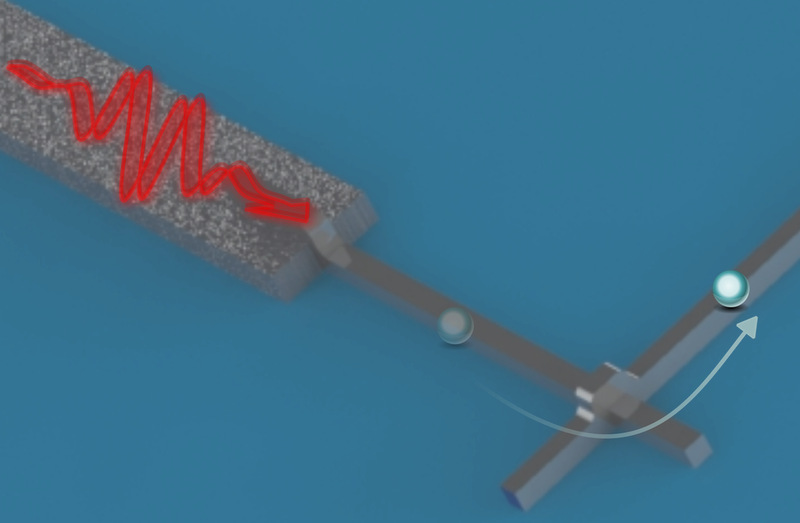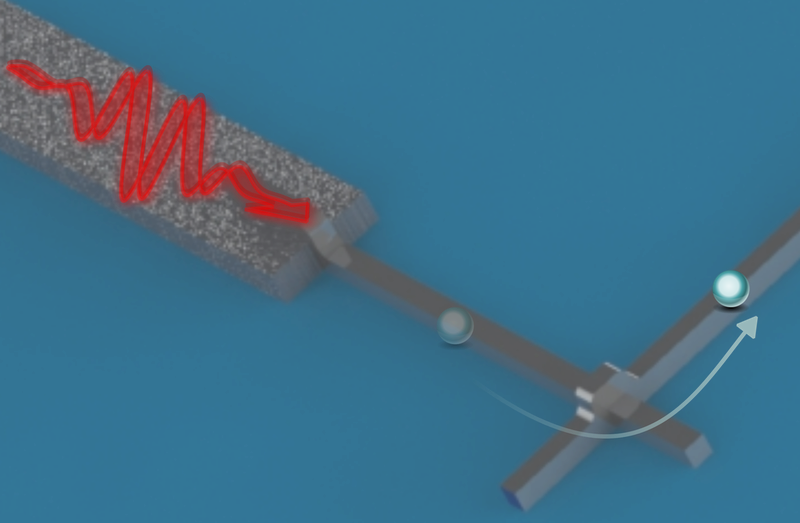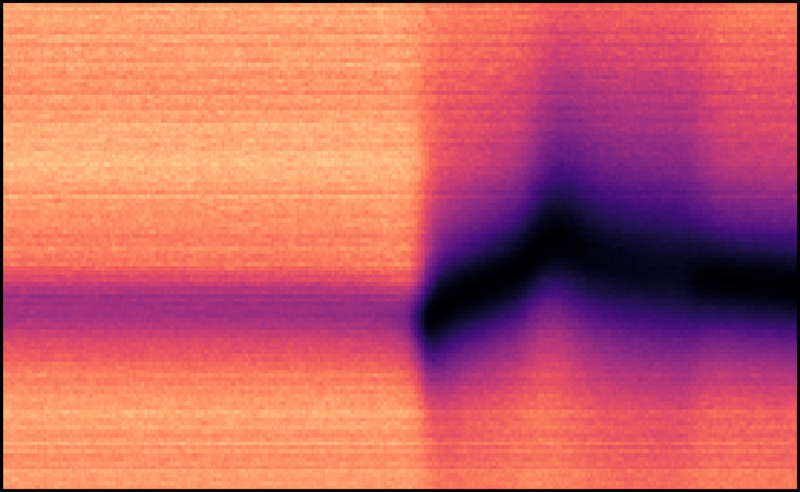How to Detect a Stream of Microwave Photons
Technologies for quantum computing, sensing, and communication process information stored in quantum bits (qubits) by using microwave photons. But detecting such photons accurately and at high rates—to read out the changing states of a quantum computer, for example—is a challenge, since they have much less energy than visible or infrared photons. Now researchers have demonstrated a detection method based on the fact that a photon can assist in the quantum tunneling of an electron through a superconducting junction [1]. The technique converts a stream of microwave photons into a flow of electrons far more effectively than other methods, showing an efficiency of 83%, and it will be of immediate use in quantum technologies.
Building good detectors of microwave photons is inherently difficult, says Julien Basset of the University of Paris-Saclay, because such photons lack the energy needed to excite electrons in semiconductors into the conduction band, thereby generating a current that can be measured. Researchers have been pursuing several techniques, but none works well for a continuous stream of photons, in which multiple photons may arrive simultaneously. For such continuous operation, as would likely be required in many practical quantum information devices, the best efficiency demonstrated so far has been only a few percent, Basset says.
Now he and his colleagues have demonstrated a significant improvement by exploiting the well-known ability of photons to help electrons tunnel across a resistive barrier sandwiched between two superconductors. Basset and colleagues reasoned that, under the right conditions, tunneling would occur with high probability, but only in the presence of an incoming photon, which would make the circuit a photon detector.
The researchers fabricated a tunnel junction made from a patch of resistive material placed between two strips of aluminum, which is a superconducting material when sufficiently cold. They then attached this junction to a wire called a resonator that acted as an antenna that could receive microwaves of a specific wavelength, determined by the wire’s length. The resonator received microwave photons from the outside through a waveguide. Transmitting these photons effectively through the resonator, without too much reflection back from the junction, required a material with unusual electromagnetic properties. The researchers chose granular aluminum as the resonator material, a composite of nanoscale aluminum particles. This material choice was key to the efficiency of the device.
To test the device, the researchers used the waveguide to send photons into the resonator at a range of microwave frequencies. Then, with a series of voltages applied to the tunnel junction, they measured the reflection coefficient of the resonator—the likelihood that a photon would come back to the resonator rather than being absorbed by the junction.
They found that the reflection coefficient dropped quickly to zero when the voltage was above a threshold value, indicating that microwave photons were sufficiently energetic to cause electron tunneling. By calculating the probability of electron tunneling for each frequency, the researchers were also able to measure the efficiency of the circuit as a detector—the likelihood of a photon being detected. They found a maximum efficiency of 83% and values consistently above 80% for all voltages above the threshold.
“This type of device had hitherto existed only for optical or infrared photons,” says Basset. “We’ve shown that with the right combination of superconducting materials and geometry, we can do the same with microwaves, converting a flow of photons into a flow of electrons with very high quantum efficiency.” The device should be capable of detecting more than 100,000 photons per second, he adds.
The next goal, he suggests, will be to confirm the detection capability further by measuring the charge generated by each electron in association with the absorption of each photon. With technical improvements, Basset expects efficiencies as high as 99% in the near future.
“Most quantum information technologies rely on microwave-photon detectors,” says solid-state physicist Ville Maisi of Lund University in Sweden. “But a key problem for such detectors so far has been low efficiency in converting photons into an electronic signal. By achieving near-unity conversion efficiency, these new results give a significant push forward for research on detectors of this kind.”
–Mark Buchanan
Mark Buchanan is a freelance science writer who splits his time between Abergavenny, UK, and Notre Dame de Courson, France.
References
- O. Stanisavljević et al., “Efficient microwave photon-to-electron conversion in a high-impedance quantum circuit,” Phys. Rev. Lett. 133, 076302 (2024).






